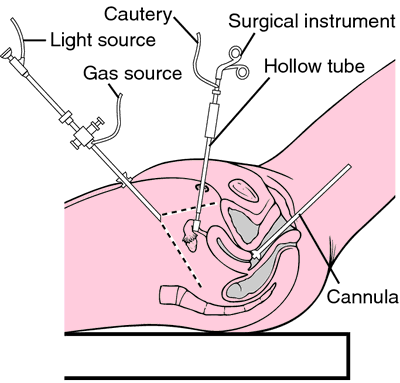
A new, short questionnaire developed by a team in Italy may provide an easy-to-use and effective tool to help physicians better diagnose female sexual dysfunction.
Researchers over the past decade have been on a continual quest to improve ways to screen women for problems related to sexual activity. Physicians frequently don’t have time during a standard office visit to include many questions about a woman’s sexual health, although sexual concerns are common for many women.
Even worse, some physicians may ignore the topic altogether because they haven’t been adequately trained to address women’s sexual health or the doctors and their patients feel uncomfortable bringing up the subject.
Researchers at the University of Rome recently created a self-survey for women of six simple questions that can be completed and scored within three minutes. Based on the results of the written survey, a physician can rapidly determine if a woman is likely to suffer from sexual dysfunction and should receive further evaluation to establish a diagnosis.
The six questions are taken from a larger questionnaire, the Female Sexual Dysfunction Index (FSDI), that was developed for sexual dysfunction screening in 2000. The FSDI is a self-survey of 19 questions dealing with six areas of sexual dysfunction: libido, sexual arousal, orgasm, sexual satisfaction, vaginal lubrication, vaginal pain or discomfort.
The FSDI test has been validated in several clinical trials since 2000 and shown to be an accurate screening tool for doctors to help identify women at risk for hypoactive sexual desire disorder (HSDD), female orgasmic disorder (FOD), and vaginal pain during intercourse (dyspareunia and vaginismus).
The Italian researchers studied the effectiveness of each of 19 FSDI test questions and identified the top six questions that best pin pointed potential problems in the six areas of sexual dysfunction. They then compared the diagnostic success of the FSDI and the abbreviated version, named the FSDI-6, after giving both tests to 200 sexually active women averaging 35 years old.
The researchers found that the shorter FSDI-6 survey was just as reliable as the original FSDI survey in helping doctors screen patients for female sexual dysfunction. The primary benefits of the new test are that is it much more simple and saves time for the patient and the physician during office visits that often already involve multiple medical forms and long health questionnaires.
Because the FSDI-6 is easy and short, it may be more likely incorporated into women’s annual health examinations than the more complicated FSDI survey. If a woman’s results from the short survey indicate there might be a sexually related problem, the physician could follow up with the longer FSDI survey as well take additional steps to examine the patient’s sexual history and overall satisfaction.
A full evaluation of a patient’s sexual history involves an open discussion about sexual concerns, satisfaction with current relationships and personal beliefs regarding sexuality. In addition, a patient will be asked to provide details about her menstrual and reproductive history, general medical conditions, surgeries, medications, and alcohol/drug use. A general physical and pelvic exam is often included. Psychological assessment may also be recommended for patients who could be depressed, overly anxious or experiencing emotional distress or trauma.
The FSDI-6 questionnaire: for those who are curious.
Simplified versions of the six questions of the FSDI-6 are listed below. Keep in mind that the questionnaire was designed for physicians’ use, and the study did not determine its effectiveness for women who take it on their own. A total score of 19 or less indicated a likelihood of female sexual dysfunction in the study.
Based on your sexual experience during the past four weeks, rate yourself from 1 (very low or none) to 5 (very high) in each of these areas:
1. Degree of sexual interest or desire
2. Level of sexual arousal during sexual activity
3. Natural lubrication during sex
4. Frequency of orgasm
5. Satisfaction with your overall sex life
6. Discomfort or pain during sex
A score of 19 or less doesn’t mean a patient has sexual dysfunction. It only indicates that a physician should follow up with a more complete evaluation of the patient’s sexual activity and history. If you have questions about this test, contact a qualified physician to discuss sexual dysfunction and to learn about current treatment options, should they be recommended.
Contributed by: D. Jenkins, Ph.D.
Sources:
Isidori AM, et al., “Development and validation of a 6-item version of the female sexual dysfunction index (FSFI) as a diagnostic tool for female sexual dysfunction.” J Sexual Med. 2010 Mar;7(3):1139-46.
http://www3.interscience.wiley.com/journal/123196250/abstract?CRETRY=1&SRETRY=0
Frank JE et al., “Diagnosis and Treatment of Female Sexual Dysfunction.” Am Fam Physician. 2008 Mar1;77(5):635-642.
http://www.aafp.org/afp/2008/0301/p635.html
EmpowHER articles related to female sexual dysfunction:
Female Sexual Dysfunction Advocacy Sheet, June 2, 2010.
https://www.empowher.com/female-sexual-challenges/content/female-sexual-dysfunction-advocacy-sheet?page=0,0
How is a Female’s Sexual Desire Problem Diagnosed? Dr. Giraldi (VIDEO), Sept 11, 2009. https://www.empowher.com/female-sexual-challenges/content/how-females-sexual-desire-problem-diagnosed-dr-giraldi-video
How Do You Define Normal Sexual Desire for Women? Dr. Giraldi (VIDEO), Sept 11, 2009. https://www.empowher.com/female-sexual-challenges/content/how-do-you-define-normal-sexual-desire-women-dr-giraldi-video




Add a CommentComments
There are no comments yet. Be the first one and get the conversation started!